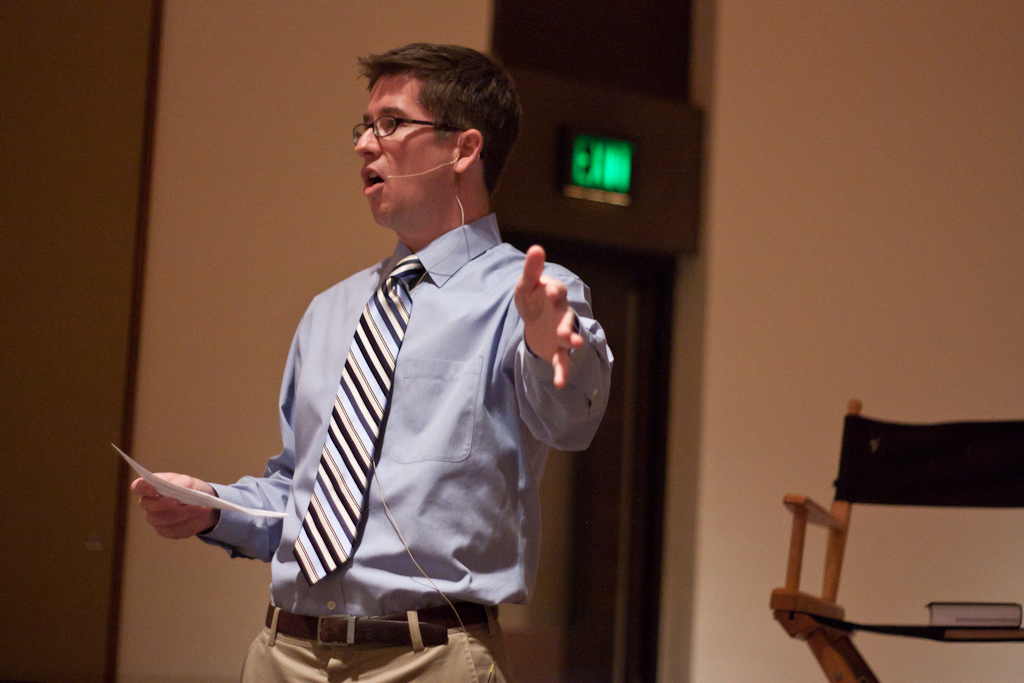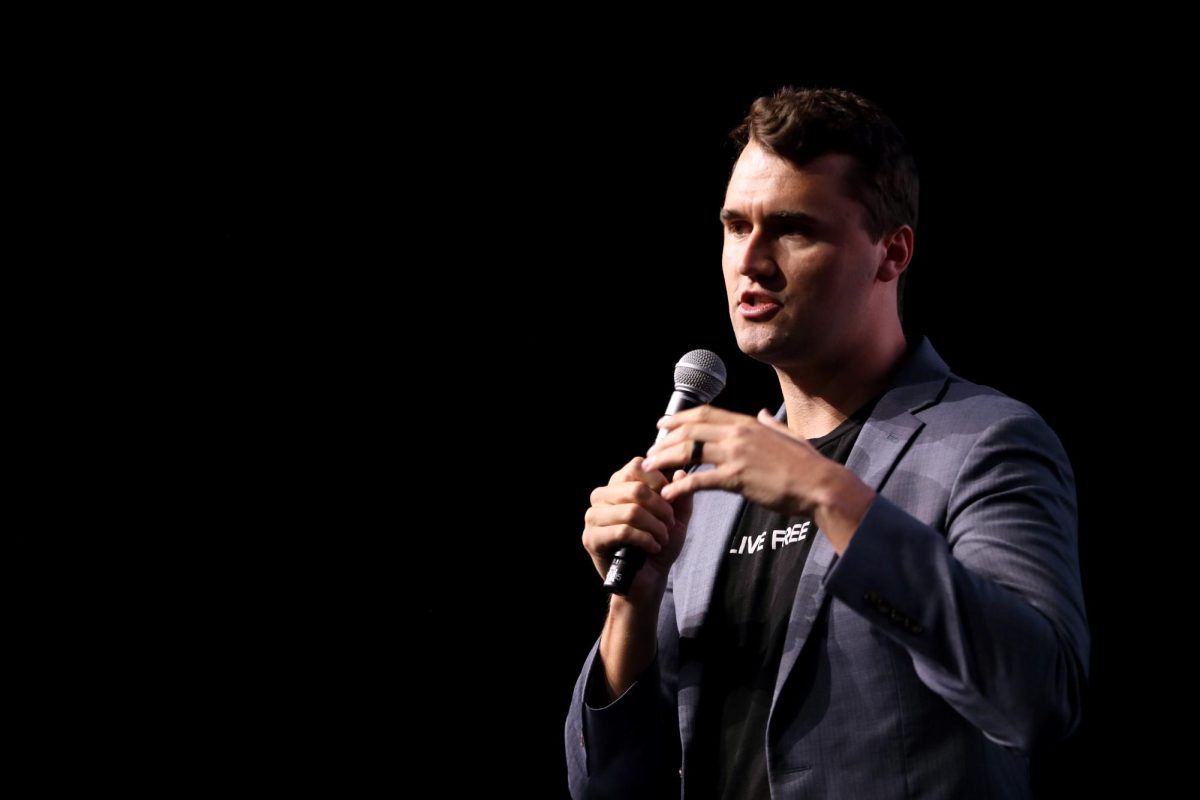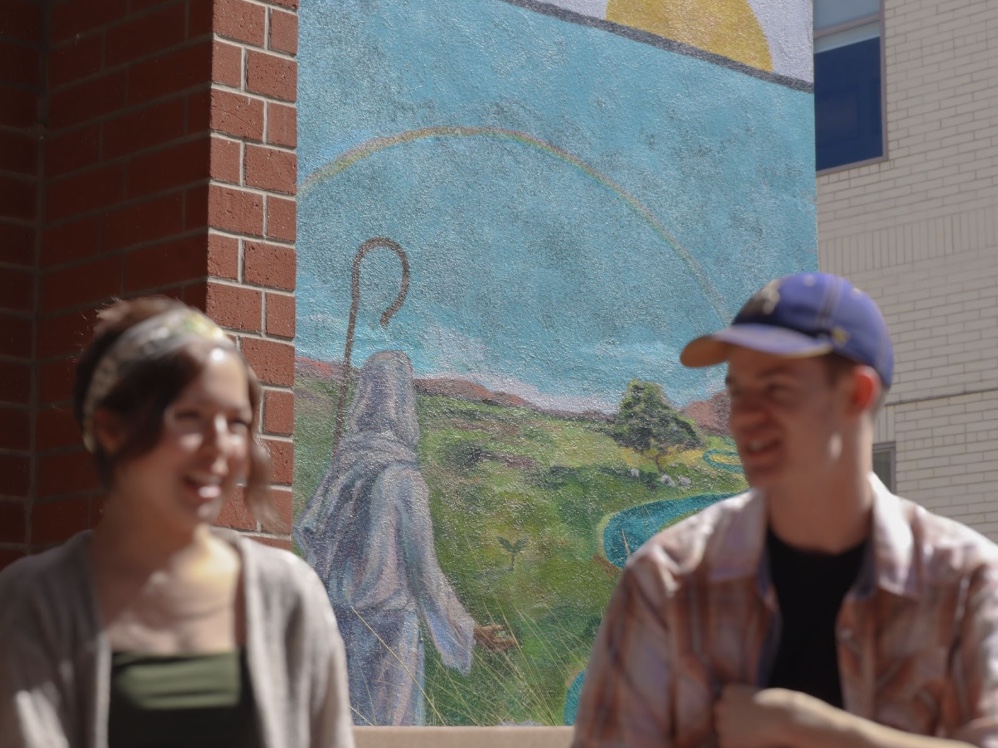
Biola professor Matt Jenson speaks on a panal clarifying the theme of “Sacred Space” on October 10, 2011. | Hannah Caprara/THE CHIMES
Around 100 students showed up at Calvary Chapel Monday night for a panel discussion entitled “What is Sacred Space?” The panel, a Year of the Arts event planned by art department chair Barry Krammes, was an attempt to shed some light on Biola’s new catchphrase. The university has always had a theme verse or emphasis, Krammes noted, but this year it has been integrated across campus.
Defining “Sacred Spaces”
“This year it’s all together. The theme verse and the theme for the year is Sacred Space,” Krammes said. The theme was chosen by this year’s visionary in residence Roberta Ahmanson and also coincides with President Corey’s declaration of the 2011-2012 school year as Biola’s Year of the Arts.
“Sacred space is a notoriously ambiguous term applied in a variety of contexts,” art professor Jonathan Anderson acknowledged to begin Monday’s conversation.
The interdisciplinary panel, which included a theologian, a philosopher, a scientist and an artist, sought to address this ambiguity by framing the discussion of sacred space with their individual perspectives and questions.
Torrey professor Matt Jenson who specializes in theology and the doctrine of sin defined sacred space as “the place where God makes himself available to us.” Our primary job, Jenson said, is to show up where God has promised he will be and enter into John Wesley’s concept of “waiting in the means of grace.” In response to the concern that God is omnipresent and therefore available to us everywhere, Jenson echoed writer Flannery O’Connor in saying that “somewhere is better than anywhere.” God makes himself evident to specific groups of people in certain places “somewhere” in order that his glory might fill the whole earth “anywhere.” Sacred spaces do not downgrade God’s omnipresence, Jenson said.
Science professor Brent Ridley also spoke to the idea of somewhere and anywhere, drawing on his experience in the field of molecular biology. Ridley proposed that sacred space can be divided into two parts: places where a person has a direct encounter with God and places where one can experience the actions of God, or as Ridley termed it, “His residue.”
Find sacred space in the body and the church
Philosophy professor Kristen Irwin suggested that God’s residue is most directly found in people. Irwin argued that sacred space is most often encountered in our interactions with other people, where we “catch a glimpse of the infinite.” Each person has something inherently foreign in them, a reflection of the divine, making every interaction an opportunity to engage with the sacred, Irwin said.
Jenson agreed, extending this idea of sacred encounters to symbolize Christ and the church.
“The sacredest of places is Jesus and the people who are gathered around him,” Jenson said.
In the same way that a person’s individual body is how they are available to interact with others, Jenson said, Jesus makes himself available for us to experience through his body — the church.
Sacred space is certainly found in the church body, Anderson agreed, but he also asserted the importance of physical constructions such as church buildings. Anderson focused on the idea that sacred spaces can be constructed, and are considered sacred because of their specific story.
“Sacred Space is a place where something significant happened,” Anderson said.
Places such as Calvary and the temple at Jerusalem, for example, are sacred because visitors use the sites to remember and reenter into those experiences. Anderson’s definition also necessitates that people engage an active role in retelling the stories that sanctify a site.
“Sacred space is made,” Anderson said. “It comes and goes, and we have a big part to play.”
Encouraging students to find their own space
While much of the discussion tended toward the abstract, the speakers strove to ground it in practical examples ranging from Auschwitz to Calvary to Half Dome. Jenson cautioned that the idea of specific sacred spaces shouldn’t desanctify all other places and times. And Irwin remarked that sacred space for her is found in a cup of coffee.
In terms of engaging with sacred spaces, panel members agreed that it is a reorienting of one’s self to the deep things of God. In that respect, sacred space is not objective so much as it is subjective. It is the shift that occurs in the individual as they grasp “deep reality,” as Irwin put it, that is the goal.
“Sacred space is what happens in us,” Anderson summarized.
While the panel may have raised more questions than it answered, the speakers said they were not concerned about this, and that it was their goal to push students toward further exploration.
This was exactly what organizer Krammes was hoping for.
“That’s why we need each other and are all the richer because of it,” Krammes said regarding different perspectives on sacred space. “Something profound will come out of it. Who knows what the outcome will be.”







